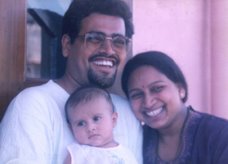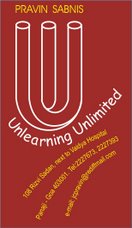An ancient tale tells the story of woman who while wandering in the mountains, found a precious stone in a stream. The next day she met a hungry traveler and when she opened her bag to share her food, he saw the precious stone. Instinctively, he asked the woman to give it to him. She did so without hesitation. The traveler left, rejoicing since he knew the stone was worth enough to give him security for a lifetime.
However, a few days later, he came back to return the stone to the wise woman. "I've been thinking," he said. "I know how valuable this stone is, but I give it back in the hope that you can give me something even more precious. Give me what you have within you that enabled you to give me this stone."
Surely there is no greater personal asset than the joy that comes of giving. We may share sometimes some of our resources or some of our money. But we need to be better at giving. Like the women in the story, we must have the courage to share the most valuable – time, skills, knowledge and most importantly opportunity. It is all about letting go of our self-absorbed and self-seeking attitude that turns us away from the joy of giving…
Also, so many of us ‘give’ only after we ‘grab’. A plunderer’s charity has no meaning. The joy of giving must comes out of a clear choice to redeem ourselves in a world of inequity and imbalance. When we look in the mirror in the morning, we should be looking at a citizen who is responsible and responsive – some who is part of the solution, not part of the problem… someone who does not grab, but who indulges in the joy of giving.
To BE BETTER at the joy of giving…
We must let go of self-centred living!
- Pravin K. Sabnis
Monday, September 28, 2009
Monday, September 21, 2009
WE SHALL OVERCOME
Today is the International Day of Peace. ‘Peace’ is deemed to signify an absence of antagonism and aggression. But it also represents a broader outlook of healthy interpersonal relationships in an interdependent world. Reasons for the absence of peace are primarily selfish greed, hateful prejudice and regressive discrimination.
Various peace movements have marched to the determined chorus of the peace anthem – ‘we shall overcome’. This protest song of the US civil rights movement is believed to be derived from a hymn penned by Reverend Charles Tindley in the early 1900s. Martin Luther King used it in his oratory. Joan Baez, Bruce Springsteen and many other singers have lent voice to it. Nations across the globe have created versions in so many languages.
Indeed, it isn’t enough to sing ‘we shall overcome’. Quite often peace becomes a shifty virtue that changes with situation. The cause of peace is oft sacrificed at the altar of selfishness. We may seek peace among religious communities, and yet play antagonist to our own neighbours. We may applaud efforts towards international peace, and yet turn a blind eye when destructive development seeks to disturb the peace of our people.
All this happens as we rein in our internal resolve for peace by succumbing to materialistic pressures. To be better at connecting to true peace, we must first overcome the circle of self-centredness and look beyond to the larger perspective of peace for all. Very simply, we must overcome hate, greed and injustice of all sorts. The path to peace is filled with toil, self-doubt, seclusion and even defeat. But we shall overcome, someday!
To BE BETTER at ‘overcoming’ the war someday…
Let’s commit to the true resolve of peace today!
- Pravin K. Sabnis
Various peace movements have marched to the determined chorus of the peace anthem – ‘we shall overcome’. This protest song of the US civil rights movement is believed to be derived from a hymn penned by Reverend Charles Tindley in the early 1900s. Martin Luther King used it in his oratory. Joan Baez, Bruce Springsteen and many other singers have lent voice to it. Nations across the globe have created versions in so many languages.
Indeed, it isn’t enough to sing ‘we shall overcome’. Quite often peace becomes a shifty virtue that changes with situation. The cause of peace is oft sacrificed at the altar of selfishness. We may seek peace among religious communities, and yet play antagonist to our own neighbours. We may applaud efforts towards international peace, and yet turn a blind eye when destructive development seeks to disturb the peace of our people.
All this happens as we rein in our internal resolve for peace by succumbing to materialistic pressures. To be better at connecting to true peace, we must first overcome the circle of self-centredness and look beyond to the larger perspective of peace for all. Very simply, we must overcome hate, greed and injustice of all sorts. The path to peace is filled with toil, self-doubt, seclusion and even defeat. But we shall overcome, someday!
To BE BETTER at ‘overcoming’ the war someday…
Let’s commit to the true resolve of peace today!
- Pravin K. Sabnis
Monday, September 14, 2009
DANCING
“Those move easiest who have learned to dance” - Alexander Pope
For many the thought of moving body to the sound of music may not be too exciting. It takes guts to dance, especially in front of an audience. We are afraid of making fools of ourselves. More often than not, it is about being self-conscious about our body. But, what if our body was physically challenged? Would the diffidence of dancing instinct increase?
In 1996, Ma Li lost her right arm in a car accident. She was 19 and training to be a ballerina. In 2001, she went on to win a gold medal in the national performing arts competition for the handicapped. In 2005, she met 21-year-old Zhai Xiaowein who had lost his left leg in a farming accident when he was just four. Ma Li began coaching Zhai to dance.
In 2007, the dance duo – one without an arm and the other without a leg - registered as one of the 7,000 competitors in the fourth annual Chinese modern dance competition. Their act won them a silver medal and the highest number of audience votes. The video clip of their dance is a huge inspiration for many (http://www.youtube.com/watch?v=LnLVRQCjh8c) and ample proof of why they deserved to win.
So often we look at the way we are and find reasons to be de-motivated. But Ma Li and Zhai have shown that the way to live is to come to terms with what we are and yet choose to aim high. Life is not flawless but our living can be better in connecting to a lofty mission. Our body may not be faultless, but our dance can be better and full!
to BE BETTER at surviving life’s deadlock
Let’s learn dance and pull up our socks!
- Pravin K. Sabnis
For many the thought of moving body to the sound of music may not be too exciting. It takes guts to dance, especially in front of an audience. We are afraid of making fools of ourselves. More often than not, it is about being self-conscious about our body. But, what if our body was physically challenged? Would the diffidence of dancing instinct increase?
In 1996, Ma Li lost her right arm in a car accident. She was 19 and training to be a ballerina. In 2001, she went on to win a gold medal in the national performing arts competition for the handicapped. In 2005, she met 21-year-old Zhai Xiaowein who had lost his left leg in a farming accident when he was just four. Ma Li began coaching Zhai to dance.
In 2007, the dance duo – one without an arm and the other without a leg - registered as one of the 7,000 competitors in the fourth annual Chinese modern dance competition. Their act won them a silver medal and the highest number of audience votes. The video clip of their dance is a huge inspiration for many (http://www.youtube.com/watch?v=LnLVRQCjh8c) and ample proof of why they deserved to win.
So often we look at the way we are and find reasons to be de-motivated. But Ma Li and Zhai have shown that the way to live is to come to terms with what we are and yet choose to aim high. Life is not flawless but our living can be better in connecting to a lofty mission. Our body may not be faultless, but our dance can be better and full!
to BE BETTER at surviving life’s deadlock
Let’s learn dance and pull up our socks!
- Pravin K. Sabnis
Monday, September 7, 2009
Length of the road
A young but earnest student approached a Zen master with a preliminary query, "If I work very hard and with diligence how long will it take for me to learn Zen." The Master immediately replied, "Ten years."
The student then said, "But what if I work very, very hard and really apply myself to learn fast -- How long then?" Replied the Master, "twenty years." "But, if I really, really work at it. How long then?" the student persisted. "Thirty years," replied the Master.
"But, I do not understand," said the disappointed student. "At each time that I say I will work harder, you say it will take me longer. Why do you say that?" Replied the Master," When you have one eye on the goal, you only have one eye on the path."
So often, when we seek to learn something, we keep worrying about ‘when’ we would ‘reach’ the destination, instead of focusing on the purpose of the trip. The approach to learning needs an attitude of patience. Time, it is said, seems to fly slower to the one whose main occupation is to watch its flight.
More importantly, when we are seized by the length of the road we tend to let go of the exciting experiences during the journey of learning. We subject ourselves to an additional load on our mind which results in the creation of unnecessary stress that further clouds our visibility on the learning curve. It is prudent to ponder on ‘how’ rather than on ‘when’.
To BE BETTER at learning sans the load,
May we never mind the length of the road!
- Pravin K. Sabnis
The student then said, "But what if I work very, very hard and really apply myself to learn fast -- How long then?" Replied the Master, "twenty years." "But, if I really, really work at it. How long then?" the student persisted. "Thirty years," replied the Master.
"But, I do not understand," said the disappointed student. "At each time that I say I will work harder, you say it will take me longer. Why do you say that?" Replied the Master," When you have one eye on the goal, you only have one eye on the path."
So often, when we seek to learn something, we keep worrying about ‘when’ we would ‘reach’ the destination, instead of focusing on the purpose of the trip. The approach to learning needs an attitude of patience. Time, it is said, seems to fly slower to the one whose main occupation is to watch its flight.
More importantly, when we are seized by the length of the road we tend to let go of the exciting experiences during the journey of learning. We subject ourselves to an additional load on our mind which results in the creation of unnecessary stress that further clouds our visibility on the learning curve. It is prudent to ponder on ‘how’ rather than on ‘when’.
To BE BETTER at learning sans the load,
May we never mind the length of the road!
- Pravin K. Sabnis
Subscribe to:
Posts (Atom)


